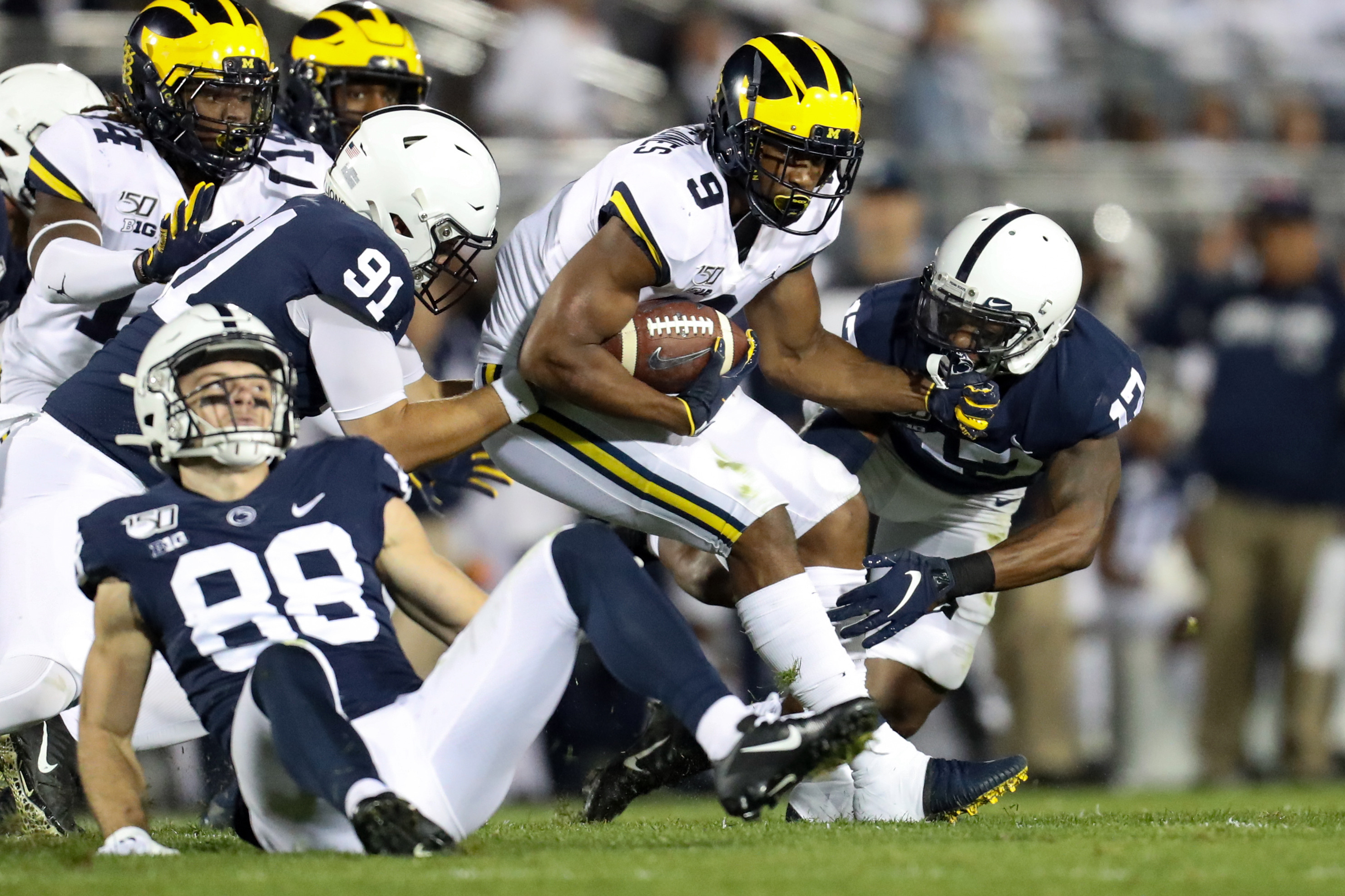Ad Disclosure

The B1G would be talking out of both sides of its mouth by moving forward with an 8-game spring season
Let’s give the B1G some credit, at least it’s working on a plan for spring football. After watching the conference fumble the decision to postpone the fall season, I can’t say I had much faith in its ability to plan ahead.
Multiple reports surfaced on Wednesday, detailing some of the early models the B1G has been eyeing to move forward with a spring season. Blue and White Illustrated learned the conference was considering an eight-game spring season, beginning the week after Jan. 1, 2021, with all teams receiving one bye week and a conference championship game between the two highest-finishing teams.
There is no plan to host any on-campus games during the spring season. Bill Rabinowitz of The Columbus Dispatch reported that the league is exploring opportunities to utilize dome stadiums in cities like Indianapolis, Detroit, Minneapolis, St. Louis and Syracuse.
Kudos to the B1G and Kevin Warren for working on something in the days after calling off the season, even if it required a nudge from Purdue’s Jeff Brohm and Ohio State’s Ryan Day.
But…
There’s always a “but,” right? And in this case, the “but” is the B1G talking out of both sides of its mouth over the last two weeks. Concerns relating to player safety have been at the forefront of the conversation when it comes to a fall season. On the surface, it doesn’t seem to be getting the same attention for spring football.
Let’s not even discuss the issues surrounding COVID-19 that will undoubtedly still be around in four months. We can table the concerns about a team-wide outbreak, questions about the long-term effects and the fear of a potential second wave of the coronavirus in the winter months. To save us from that argument, let’s just pretend all of those areas have been addressed.
It still leaves the B1G with one problem — 20 games in 10 months. That’s the type of calendar we’re looking at under the B1G’s reported framework for making a spring season a reality. That’s the bare minimum in terms of games, by the way. With the conference hoping to host a spring “championship game” and potentially setting up a Rose Bowl matchup with the Pac-12 featuring the two league champions, one team could play as many as 10 games in the spring.
For reference, Clemson played 12 games in the 10-month period between November 2018 and the beginning of the 2019 season. The Tigers claimed the national championship at the end of the 2018 campaign before beginning its title defense in August 2019. The highest total number of games a team will play in any given 12-month stretch is 16, and that’s if they make an appearance in the College Football Playoff National Championship Game.
In a sport that takes such a physical toll on the body, is an attempt to squeeze 20 games into a 10-month period really worth it? After all, it’s not just the games we’re talking about. There will still be summer workouts and fall camp a short time after the 2021 spring season concludes in mid-to-late March.
Former Minnesota wide receiver Rashod Bateman doesn’t think it’s an intelligent move, either.
“I definitely think that’s not okay,” Bateman said, according to 247Sports. “We can already see all of the injuries that go on through a regular season, let alone playing football twice in one calendar year and the wear and tear that football does on your body, I just think that’s definitely not smart. That’s not keeping the players safe.”
No, I’m not a doctor or an athletic trainer, but Bateman has a point. Playing that many games in less than a year is an incredibly short amount of time to recuperate from even a trimmed-down schedule. Significant injuries may not be allotted enough recovery time. By November 2021, exhaustion among student-athletes may be at an all-time high.
Essentially, it sounds like a sure-fire way to get a lot of players injured in a short amount of time. And while we can certainly commend the B1G for finally mapping out a way to work things out in the spring, having student-athletes participate in 20 football games over a 10-month span goes against every argument the conference has made this fall.
Player safety, remember?
I understand that if the spring season is implemented then summer workouts and other team activities may have some limitations. Players may end up getting a significant amount of time off between the season finale in March and the season openers in August/September (the first B1G game is scheduled for Aug. 29 with Nebraska and Illinois playing in Dublin, Ireland).
Still, it’s a lot of football in a short amount of time.
So, is cobbling together an eight-game schedule in the spring really worth it? Maybe. It would allow B1G teams to compete and not just rely on intrasquad scrimmages. It would mean that the B1G wouldn’t be a full year of experience behind ACC, Big 12 and SEC despite not playing this fall. In that sense, playing an eight-game season makes a lot of sense.
But when the primary reason to cancel fall football was based on player safety, it feels awfully hypocritical to ask student-athletes to play 20 games in a 10-month period. From a health and wellness standpoint, that doesn’t make much sense.
Then again, nothing the B1G has been doing over the last six months has made much sense.
Dustin grew up in the heart of Big Ten country and has been in sports media since 2010. He has been covering Big Ten football since 2014. You can follow him on Twitter: @SchutteCFB